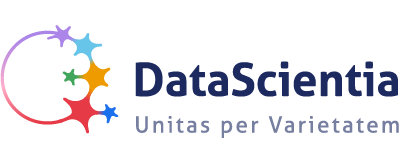GENERAL DESCRIPTION
The use of logic in computer science is very well-documented. The exponential increase of literature on every area of computer science has forced both definition and use of logical formalisms for knowledge representation and reasoning into greater complexity, and this complexity has in turn necessitated a deeper study of the principles by which logical models may be constucted. It has become more and more apparent, say since the 1989′ First International Conference on the Principles of Knowledge Representation and Reasoning (KR-89), that knowledge representation models and reasoning models are only different views of the same common problem.
Different logic-based approaches to data and knowledge representation and reasoning are beginning to converge. It seems therefore useful to try to accelerate this process by trying to provide a survey, as uniform as possible presentation of the whole problem of logic-based modeling of data and knowlege, treating the subject on general theoretical lines, yet filled in with practical examples from real-world scenarios, problems and applications, with a particular attention paid to the borderlines and inter-relationships among all logics presented.
There is as yet no unified theory of logic-based models for data and knowledge representation, and a good deal of practical systems and working devices are not logic-based in their design foundation and unsullied by any logical model. There is nevertheless a real need for the subject to be looked at as a whole.
COURSE DESCRIPTION
This course is taught in Italian. This is a 14 week, 48 hours, six credit introductory course to Logic. The Logics covered are: propositional logics, first order logics, and Description logics. The focus is on modeling (i.e., how to use logics as a modeling language), semantics (i.e., the formalization of the intended semantics of the models developed), reasoning (with a focus on Tableau systems) and on the use of logics in practice (with a focus on the formalizational of natural language, ER models and relational data bases and knowledge graphs). The course has a strong emphasis on examples, exercises and practical applications of Logic, with a focus on Artificial Intelligence and Computer Science applications.
LEARNING OUTCOMES
The goal of this course is to provide motivations, definitions and techniques in support of the usefulness of logic in the effective and efficient modeling of data and knowledge. We aim to motivate students to continue their career with higher interest into logic-based modelling for data and knowledge representation in their own field of expertise, and to produce computer-processable solutions of relevant problems.
CALENDAR
The course runs from September 14th 2023 till December 15th 2023 with the following schedule
- Thursdays, 13:30 – 15:30, Room 104
- Fridays, 13:30 – 15:30, Room 104
EXAM
Students can pass the course via two midterm exams. The minimum score to pass the exam is 15 points (half of the available points) in each midterm and it is required an average of the two of at least 18 points. In alternative, students can pass the course with a written exam (with at least 18 points) during dedicated sessions.
Course Features
- Lecture 0
- Quiz 0
- Duration 48 hours
- Skill level All levels
- Language English
- Students 28
- Assessments Self
Requirements
- There are no formal pre-requisites, but a certain familiarity with mathematical notation and with data bases is useful.
Target audiences
- The intended students are students of the bachelor degree in Computer Science of the Department of Computer Science and Information Engineering (DISI) of the University of Trento.



